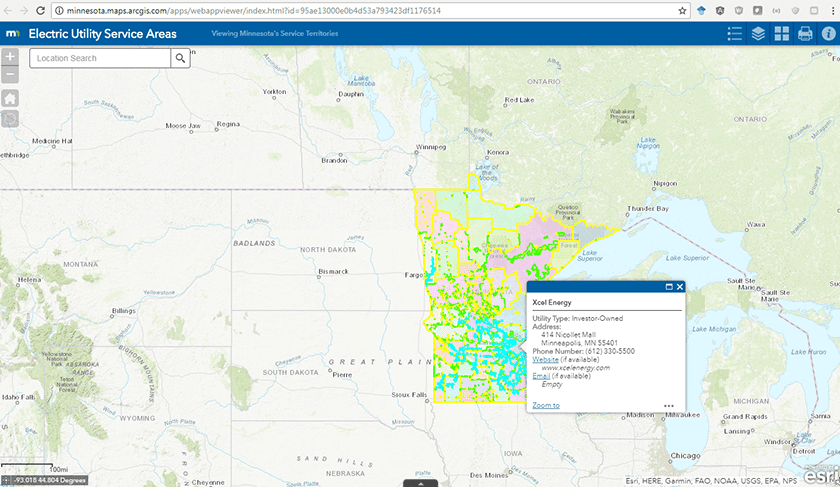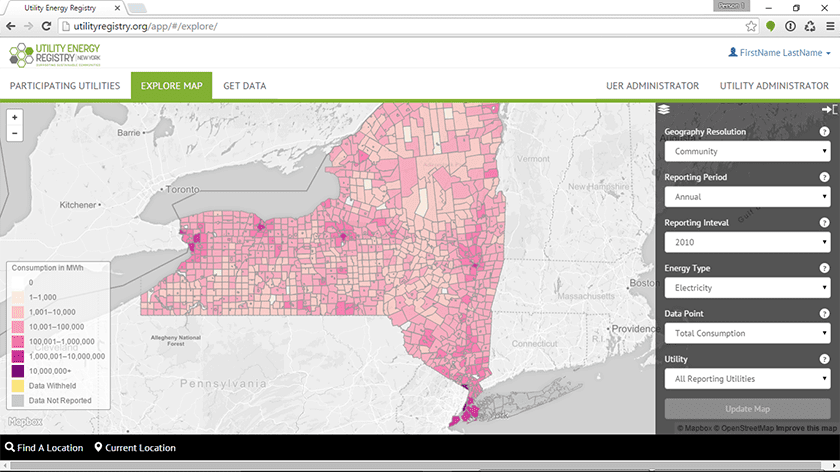
Moving toward centralized energy data collection
LHB is once again directly involved in an exciting project to help reshape the future of the energy sector in Minnesota.
Throughout our work with the Minnesota Utility Energy Registry, LHB is helping to solve the inefficiencies in collecting community-wide energy data from utilities. Our firm was selected for this project based on our long trajectory and experience with community-wide energy data related work.
The Utility Energy Registry project (UER), which started in New York, is now being pilot tested in a few different states, which includes Minnesota. In partnership with the Great Plains Institute, LHB is helping to design the State Data Protocol, in other words, the guidelines and definitions for users entering data into the registry.
This year-long project is led by the New York State Energy Research and Development Authority (NYSERDA) and funded by the U.S. Department of Energy’s Office of Energy Efficiency and Renewable Energy’s (EERE’s) State Energy Program (SEP) through their 2016 Competitive Funding Opportunity Announcement.
An inefficient model that must change
Throughout our work with the Regional Indicators Initiative and the Minnesota LoGoPEP we have experienced the challenges and inefficiencies in the current model of energy data collection.
There are many reasons a community may need energy data. There’s no way for a local government to make informed decisions on enacting an energy plan without data. Energy data is already a key aspect of evidence driven decision-making at the community level.
Given the already large demand for community-wide energy data, some energy utilities, like Xcel Energy, have decided to implement their own program for community-wide energy data reporting. The Community Energy Reports program allows cities in Minnesota to track metrics related to energy consumption, cost and participation in different programs that Xcel Energy provides.
However, not all communities are served by Xcel, some communities are served by a patchwork of different utilities who may have their own way of exporting data. If a community wanted a comprehensive overview of their energy consumption they would have to individually request information from each utility, then format it in a consistent manner, compiling several years’ worth of data; sometimes combining digitally available data with data only available on paper. It quickly proves to be a labor-intensive activity.

Creating a protocol
The inefficient model described has a potential solution: What if there was a web based centralized data repository for utilities?
Today’s technology enables the creation of online repositories for data. All the data is uploaded to a “cloud” and from there, it can be downloaded for multiple processes. Software also makes it possible to create automatic data visualizations and to deliver quality insight from the data.
The intent is to save time for both the utility companies and communities or interested parties. For the utilities the platform means only completing the energy request once instead of each person requesting the information, and for communities or interested parties, they would not have a streamlined process of accessing relevant information.
Designing the data protocol gives LHB the ability to lend our expertise to the energy sector in Minnesota in data management and stakeholder engagement. LHB brings value to the process by knowing what metrics are important in Community Energy Planning from projects such as LoGoPEP, Regional Indicators and the Saint Louis Park Energy Action Plan.
Part of the project is to understand what the current data capabilities of energy utilities and to build on previous work to avoid duplicating efforts.
To have a consensus on what data to include and what utilities can realistically report, the Minnesota Utility Energy Registry group has formed a State Working Group, which brings together a diverse group of stakeholders such as: universities, non-profits, private sector, local governments, and more. Part of LHB’s work on UER is to receive a wish list of all the data that stakeholders want to include in the registry and to process the list into something that utilities agree is both technical and logistically feasible for them to report.
Submitting data to the Utility Energy Registry will not be mandatory to utilities. The registry provides a platform to simplify the process of data collection for stakeholders and to make it convenient for utilities to collaborate. Ideally, by simplifying the process, we will see an increased interest from utilities in participating.

Challenges
Privacy is a huge concern for utility companies. In many cases a community has only a few very large consumers, and that by providing data, their customers anonymity will be compromised. This is an important issue that is still being worked through.
Another hesitation for utilities to submit data is that it might take some effort to gather data together from their own records. Data can be chaotic and depending on how old their technology is, it might require some upfront work organizing the data.
The Utility Energy Registry is intended to reduce the entropy surrounding community-wide energy data requests, and hence to ease in the transition for utilities in to a data-driven-world.
Minnesota is showing leadership!
Minnesota has been a leader in the Midwest region when it comes to energy and climate action, like when our legislature adopted the Next Generation Energy Act. This is once again, proof that our state is taking active measures towards energy responsibility and shows that even in such a messy energy environment, where we have more than 180 energy utilities serving the state, we can work together to build a better future.
I look forward to when the Utility Energy Registry is operational so that we, as well as others, can spend more time working with the data to make progress in energy planning and energy reductions; rather than spending so much time collecting it.
A full webinar recording describing the Minnesota Utility Energy Registry can be found here.

